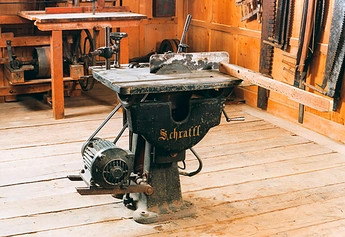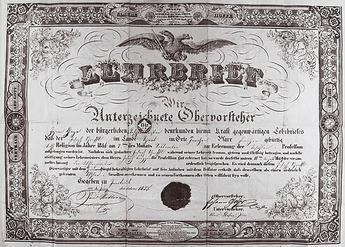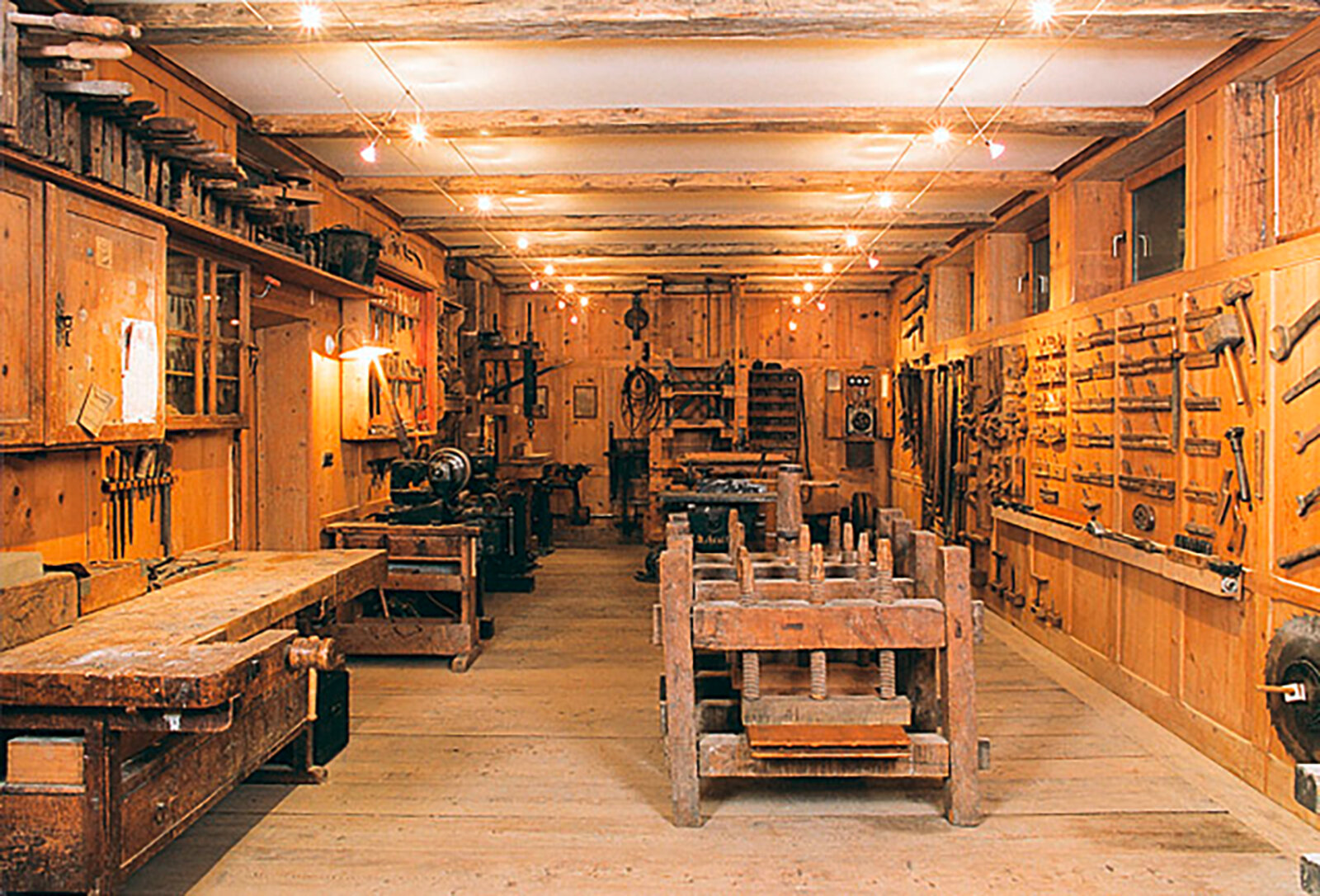A thorough academic study of all the archives here would produce a substantial book. Moreover, some of the works by the senior chef's father on display in the entrance area of the museum are well worth seeing, including a splendid masterpiece from 1903.
Before embarking on our museum tour, we let the entire room with its almost overwhelming collection of exhibits make an impression on us. The heavy wooden floorboards and robust paneling provide an appropriate backdrop for the museum's material, thoughtfully arranged with great care and affection. The whole offers a lively insight into the working world of a carpenter in bygone times. The function and handling of some of the tools are scarcely known today and, as such, require explanation from a knowledgeable guide.
When it comes to providing explanations, Master Schraffl, who once worked with all of these tools as a young man, is in his element. As he speaks about the work of his grandfather and father, as well as his own early years in carpentry, the individual exhibits, ranging from the simplest plane to the most primitive hand saw to the first mechanical devices, suddenly come to life. One begins to grasp the extent of effort required of carpenters of the past, who were true artisans in the purest sense, and how much craftsmanship they had to master, something that is increasingly being taken over by machines for today's trade professionals.
For example, a plane, the emblematic tool of the trade, is used today at best during assembly work to rectify minor irregularities and defects on site. However, who would still manually smooth a board supplied by the sawmill with the "Rachbank" and various planes? The "Rachbank" was used during the initial planing to remove the roughest unevenness of the board.
Nearly seventy years ago, manual planing was the primary task of carpenters, which demanded a delicate touch acquired through a great deal of practice.
It was the distant time when the poet Ferdinand Raimund had the carpenter Valentin say in his stage play "Der Verschwender":
Often my wife quarrels with me, O horror!
That doesn't make me angry;
I knock out my plane
and think: this is music to my ears!
And the father of today's senior boss still had the following saying prominently displayed in the workshop:
The carpenter doesn't care
whether he is poor or rich,
because he sets the plane to work
and planes everything evenly.
However, as we delve into this journey through the past, our intention is not to awaken nostalgia, but rather to marvel at the craftsmanship of yesteryears. We wish to express gratitude for the remarkable achievements of the previous generations of carpenters.
With this mental preparation, we embark on our museum tour, starting from the entrance area and proceeding clockwise along the walls. The following images, along with the accompanying explanations, serve as guides and aids for interpretation.
It's worth noting that even a young carpenter must seek guidance on how to handle certain tools since this collection harks back to a time that only older colleagues can remember. What Candidus Schraffl Sr. has created here is undoubtedly a unique treasure, making a valuable addition to the Folklore Museum in Dietenheim, which is primarily dedicated to the former life and work of farmers. While most other carpenters have disposed of the old and no longer used tools and equipment, Schraffl felt it was important to lovingly preserve everything that had served him and his predecessors throughout many years of craftsmanship.


